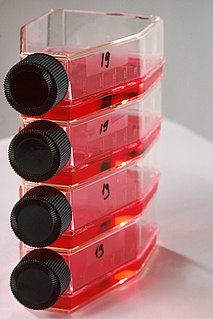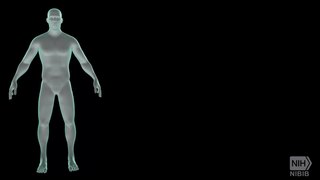
The Salk Institute for Biological Studies is an independent, non-profit, scientific research institute located in the La Jolla community in San Diego, California. It was founded in 1960 by Jonas Salk, the developer of the polio vaccine; among the founding consultants were Jacob Bronowski and Francis Crick. Building did not start until spring of 1962. The institute consistently ranks among the top institutions in the US in terms of research output and quality in the life sciences. In 2004, the Times Higher Education Supplement ranked Salk as the world's top biomedicine research institute, and in 2009 it was ranked number one globally by ScienceWatch in the neuroscience and behavior areas.

The Marine Biological Laboratory (MBL) is an international center for research and education in biological and environmental science. Founded in Woods Hole, Massachusetts, in 1888, the MBL is a private, nonprofit institution affiliated with the University of Chicago. After being independent for most of its history, it became affiliated with the university on July 1, 2013. It also collaborates with numerous other institutions.

Cold Spring Harbor Laboratory (CSHL) is a private, non-profit institution with research programs focusing on cancer, neuroscience, plant biology, genomics, and quantitative biology.
The Office of the Provost at Indiana University Bloomington oversees the academic programs, research, and policies of 16 schools on the Indiana University Bloomington campus. Together, these units offer more than 550 individual degree programs and majors.
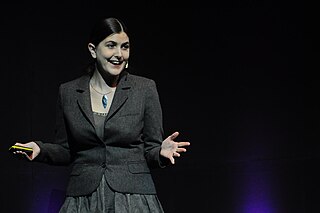
Honor Harger is a curator and artist from New Zealand. Harger has a particular interest in artistic uses of new technologies. She is currently the executive director of the ArtScience Museum in Singapore.

The Halmos College of Natural Sciences and Oceanography is a natural science college at Nova Southeastern University in Florida. The college offers programs in subjects like biology and mathematics and conducts oceanographical research.

BioArt is an art practice where humans work with live tissues, bacteria, living organisms, and life processes. Using scientific processes such as biotechnology the artworks are produced in laboratories, galleries, or artists' studios. The scope of BioArt is considered by some artists to be strictly limited to "living forms", while other artists would include art that uses the imagery of contemporary medicine and biological research, or require that it address a controversy or blind spot posed by the very character of the life sciences.

The College of Biological Sciences (CBS) is one of seven freshman-admitting colleges at the University of Minnesota. Established in 1869 as the College of Sciences, the College of Biological Sciences is now located on both the Minneapolis Campus and the St. Paul Campus. CBS is a college that focuses its undergraduate and graduate attention towards research. The dean is Valery E. Forbes. The Associate Dean for Graduate Education is Carrie Wilmot, the Associate Dean for Undergraduate Education is John Ward, the Associate Dean for Research is Thomas Hays, and the Associate Dean for Faculty is Marlene Zuk.

The Rocky Mountain Biological Laboratory is a high-altitude biological field station located near Crested Butte, in the West Elk Mountains in the state of Colorado, United States. The laboratory was founded in 1928 on the site of an abandoned mining town. Research areas include the ecology of the region, climate change, pollination biology and a long-running study of the yellow-bellied marmot. The laboratory offers courses for undergraduate students, including National Science Foundation funded REU students, and provides support for researchers from universities and colleges.
Sarah Jane Pell is an Australian artist, researcher and occupational diver. Her works combine the traditions of Performance art and human factors with Underwater habitat and Occupational diving technologies. She is best known for pioneering "aquabatics" that is performed underwater or shown in museums as films and artefacts. She designs civilian space-analogues and produces speculative fiction, live art, and novel experiments.
The College of Natural Science (NatSci) at Michigan State University is home to 29 academic units serving 5,000 undergraduate majors and nearly 1,000 graduate students in the biological, physical and mathematical sciences.
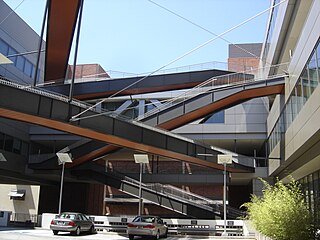
The California NanoSystems Institute (CNSI) is an integrated research center operating jointly at UCLA and UC Santa Barbara. Its missions are to foster interdisciplinary collaborations for discoveries in nanosystems and nanotechnology; train the next generation of scientists, educators and technology leaders; and facilitate partnerships with industry, fueling economic development and the social well-being of California, the United States and the world.
Do-it-yourself biology is a growing biotechnological social movement in which individuals, communities, and small organizations study biology and life science using the same methods as traditional research institutions. DIY biology is primarily undertaken by individuals with extensive research training from academia or corporations, who then mentor and oversee other DIY biologists with little or no formal training. This may be done as a hobby, as a not-for-profit endeavour for community learning and open-science innovation, or for profit, to start a business.
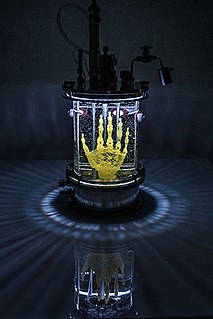
Hybrid arts is a contemporary art movement in which artists work with frontier areas of science and emerging technologies. Artists work with fields such as biology, robotics, physical sciences, experimental interface technologies, artificial intelligence, and information visualization. They address the research in many ways such as undertaking new research agendas, visualizing results in new ways, or critiquing the social implications of the research. The worldwide community has developed new kinds of art festivals, information sources, organizations, and university programs to explore these new arts. Hybrid arts is also the name of a non profit Arts education company in the United Kingdom. Set up in 2003 after a four-year development period to create a new species of training and arts engagement provider in the cultural industries...see Hybrid:arts
Victimless Leather – a prototype of a stitch-less jacket, grown from cell cultures into a layer of tissue supported by a coat shaped polymer layer.
The College of Science at Virginia Tech contains academic programs in biology, chemistry, economics, geosciences, mathematics, physics, psychology, and statistics. In 2010-11, the College of Science consisted of 339 faculty members and 4,370 students. The college was established in July 2003 after university restructuring split the College of Arts and Sciences, established in 1963, into two distinct colleges. Lay Nam Chang has been acting dean of the College of Science since its inception in 2003.
Radhika Nagpal is an American computer scientist and researcher in the fields of self-organising computer systems, biologically-inspired robotics, and biological multi-agent systems. She is the Fred Kavli Professor of Computer Science at Harvard University and the Harvard School of Engineering and Applied Sciences. She is also a Core Faculty Member of the Harvard Wyss Institute for Biologically Inspired Engineering. In 2017, Nagpal co-founded a robotics company under the name of Root Robotics. This educational company works to create many different opportunities for those unable to code to learn how.
Oron Catts is an Australian artist and researcher currently residing in Perth, Australia where he has been employed at the University of Western Australia since 1996. He works as an artistic director of SymbioticA, which he is also co-founder of. Together with Ionat Zurr he founded the Tissue Culture & Art Project. From 2000–2001 he was a Research Fellow at the Tissue Engineering and Organ Fabrication Laboratory at Harvard Medical School. He has also worked with numerous other bio-medical laboratories in several different countries.

Carl Hirschie Johnson is an American-born biologist who researches the chronobiology of different organisms, most notably the bacterial circadian rhythms of cyanobacteria. Johnson completed his undergraduate degree in Honors Liberal Arts at the University of Texas at Austin, and later earned his PhD in biology from Stanford University, where he began his research under the mentorship of Dr. Colin Pittendrigh. Currently, Johnson is the Stevenson Professor of Biological Sciences at Vanderbilt University.
The William J. and John F.Kennedy College of Sciences at the University of Massachusetts Lowell is so named for the Kennedy family and their contributions to the campus. John F. Kennedy is an alumnus of the Lowell Technological Institute Class of 1970. The Lowell Technological Institute merged with the Lowell State College to become the University of Lowell in 1972. It joined the UMass system in 1991 to become Umass Lowell.






